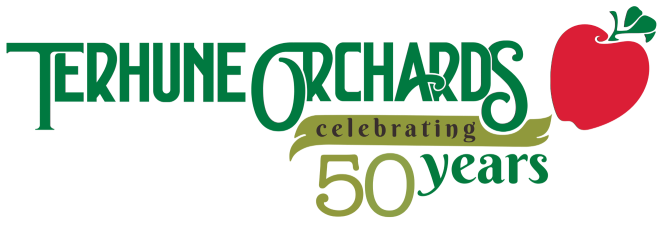by Gary Mount
Each year in May, something happens at Terhune Orchards that makes me cringe. It is time to thin apples. I hate doing it; I get stressed and grouchy (or so says my family) and thinning makes me a nervous wreck. But I have to do it. Not doing so would leave us with small apples at harvest, possibly broken down trees and, worst of all, the likelihood of a very light crop the following year.

My life growing up on an apple farm involved a lot of thinning. In those days, all thinning was done by hand. My father was pleased to have four sons—that made eight extra hands in the orchard during the summer to pluck off some of the small apples.
My brothers and I worked during the summers when school was out. When my parents bought a summer house at the New Jersey shore, we commuted to the farm in Princeton each day. Thinning apples for my father was not easy; the trees were large and most of the work had to be done using a 22-foot ladder. It was very tiring. Up and down the ladder, as we first moved the ladder around the tree and then from tree to tree.
Then there was the mental work – how many to thin off and how many to leave. Decisions, decisions, decisions! Enough to make us all want to sleep in the car on the way back to the shore. But, my father’s driving put a stop to that. It is impossible to say how many times the entire male line of my family came close to being extinguished.
Somehow we all survived to thin again. We not only aimed to increase the value of the crop by increasing the size of the apples, but we wanted to counteract the alternate bearing habit of apples. Each seed of a developing apple produces a hormone that is transmitted back up the stem into the wood of the tree. Each year, as the apples grow, the tree also grows the buds for the next year. A heavy crop with the consequently larger numbers of seeds and greater amount of hormone influences the forming buds to become leaf buds. A light crop means fewer apples, lower numbers of seeds and a smaller amount of hormone – and the bud is more likely to become a flower bud. This up and down pattern is distressing to fruit growers, because we absolutely need a crop every year.
Thinning in most orchards is now done with a combination of hand thinning and the use of sprays. The sprays take advantage of the tree’s natural tendency to drop some of its fruit in June. The sprays mimic the natural process and encourage the fruit drop.
Then, we do the follow-up by hand.
But, wouldn’t you know? Spray thinning is not an exact science. It is greatly affected by the weather before and after the time of application. Sometimes it works too little and sometimes too well. It’s a sickening feeling to over-thin and realize that you did something that caused the light crop. Under thinning as a result of spraying means following up with a lot of hand thinning.
I try to keep a positive attitude around thinning time and try not to be too grouchy around my family. Thinning usually works as it should. It is just another part of what I think is the best job in the world – growing apples.
